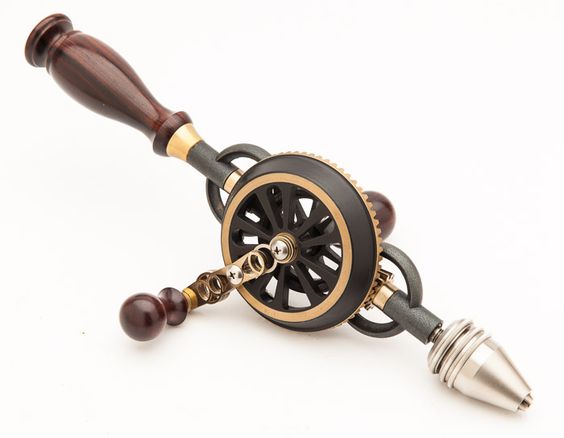Rhyolith
Established Member
I own around 30+ Hand powered drills and have been seeking the "best" ever, for no reason other than a fairly easy and cheap hobby.
After testing a load of these via drilling holes in a small log, I clicked that the most common reason for underperformance was wear inside the various spindles, mainly that connecting the main wheel to the body. This wear is not that obvious to look for as its present in many otherwise good drills and in such a high proportions (approx 50% of all decent drills in have seen or bought have significant play in the crank wheel) that its easy to not know it as being wear at all. It is also easy to miss as it can spin round lovely and smooth until under load (drilling) only then does the mechanism become rough and stiff.
The core point is that there should be virtually no play in the main crank wheel of a hand powered drill, even if it has an equaliser (thrust bearing) or second pinion (though this does allow for a little more play than simpler single pinion models). Further I don't think there is a solution to it short of making a load of new parts, as I have seen limited success with the washer method outside of a handful of specific models (mainly simpler English made ones). So those looking to buy nice second hand hand drills for using, this is something really worth checking.
I am a bit unsure what causes such disparities in this wear, with drills that appear to have been equally abused (or not) judging by remain decals etc, displaying radically different levels of wear... maybe insufficient lubrication? Grit getting in?
After testing a load of these via drilling holes in a small log, I clicked that the most common reason for underperformance was wear inside the various spindles, mainly that connecting the main wheel to the body. This wear is not that obvious to look for as its present in many otherwise good drills and in such a high proportions (approx 50% of all decent drills in have seen or bought have significant play in the crank wheel) that its easy to not know it as being wear at all. It is also easy to miss as it can spin round lovely and smooth until under load (drilling) only then does the mechanism become rough and stiff.
The core point is that there should be virtually no play in the main crank wheel of a hand powered drill, even if it has an equaliser (thrust bearing) or second pinion (though this does allow for a little more play than simpler single pinion models). Further I don't think there is a solution to it short of making a load of new parts, as I have seen limited success with the washer method outside of a handful of specific models (mainly simpler English made ones). So those looking to buy nice second hand hand drills for using, this is something really worth checking.
I am a bit unsure what causes such disparities in this wear, with drills that appear to have been equally abused (or not) judging by remain decals etc, displaying radically different levels of wear... maybe insufficient lubrication? Grit getting in?

































